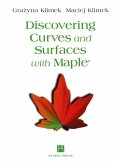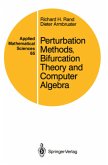Despite the fact that Maple V has become one of the most popular computer algebra systems on the market, surprisingly few users realize its potential in the field of scientific visualization. The purpose of this book is to equip the reader with a variety of graphics tools needed on the voyage of discovery into the complex and often beautiful world of curves and surfaces. A comprehensive treatment of Maple's graphics commands and structures is combined with an introduction to the main aspects of visual perception. Top priority is given to the use of light, color, perspective, and geometric transformations. Numerous examples, accompanied by pictures (many in color), cover all aspects of Maple graphics. The examples can be easily customized to suit the individual needs of the reader. The approach is context independent, and as such will appeal to students, educators, and researchers in a broad spectrum of scientific disciplines. For the general user at any level of experience, this book can serve as a comprehensive reference manual. For the beginner, it offers a user- friendly elementary introduction to the subject, with mathematical requirements kept to a minimum. For those interested in advanced mathematical visualization, it explains how to maximize Maple's graphical capabilities. In particular, this book shows how to turn Maple into an excellent modeling tool capable of generating elaborate surfaces that conventional modelers cannot produce. These surfaces can be exported to an external ray tracer (e.g. POV-ray) for sophisticated photo-realistic rendering. All of the Maple code segments which are presented in the book, as well as high-resolution pictures showing alternative renderings of some of the book's color plates, are included on the accompanying DOS diskette.








